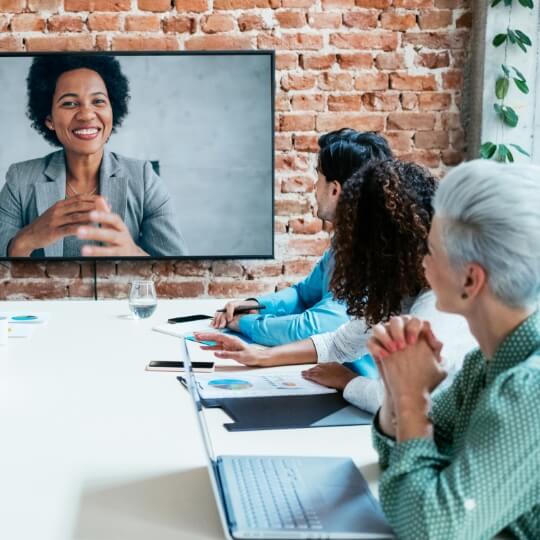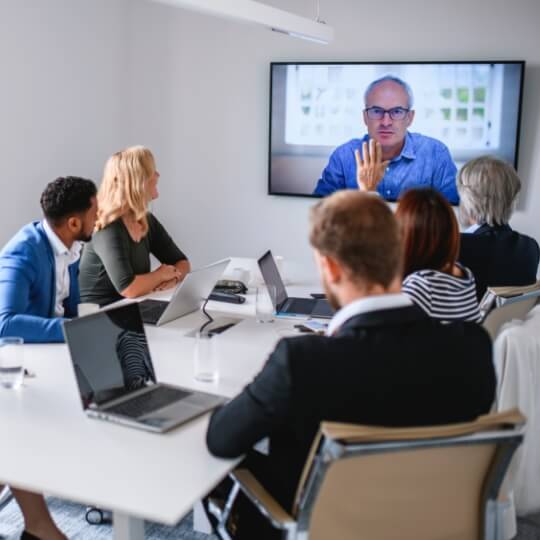Online safety tips for managers, editors and producers

No one should have to experience online abuse, but knowing the most effective ways to prevent and deal with it can help you manage the impacts.
You can support the wellbeing and resilience of journalists by helping them prepare in practical and psychological terms for exposure to an online audience. The Australian Broadcasting Corporation (ABC)* does this through assessing risk levels and taking steps to reduce them during the staff onboarding phase and commissioning of content. This should include assessing risk levels and taking steps to reduce them during the staff onboarding phase and when commissioning content.
If an incident does occur, the online abuse can be overwhelming for the person targeted and for those trying to support them. So it’s helpful to have an incident response plan in place and make sure all staff know how to access and follow it. You can use these tips to help develop that plan.
On this page:
Onboarding new journalists
Address the potential for online abuse when bringing on a journalist
The ABC’s Social Media Wellbeing Advisor recommends setting the tone for open discussion about social media abuse by discussing the risks when recruiting journalists. The aim is not to deter them, but to make sure they are aware of the realities of the role.
Understand the risks
Consider social media safety risks when onboarding staff to identify if they are particularly likely to need support.
The ABC’s risk assessment considers the following:
- How visible will the journalist be online?
- Will they be reporting on a topic which is likely to put them at heightened risk of online abuse?
- Will they be interviewing talent who may be a at heightened risk of online abuse?
- Does the journalist belong to a demographic more likely to experience online abuse?
- Has the journalist previously experienced online abuse?
Promote key supports
If a journalist is at heightened risk of online abuse, take particular care to regularly remind them of the support available, who to contact if they experience an incident and how to access free, confidential psychological support or counselling.
All journalists should do online safety training and be provided with resources that are tailored to their likely needs. This includes tips for preparing for potential exposure to online abuse. Steps that can make a big difference to outcomes include reviewing social media privacy and security settings to limit unwanted interactions, and assessing the likelihood of abuse before an assignment so it’s easier to depersonalise it. The should also know when and how to report online abuse to the social media service or to eSafety.
eSafety recommends preparing journalists to support any colleagues who are attacked online, if it’s safe to do so. This could include creating a ‘response library’ of comments they can post to call out online abuse and support the person who is targeted.
Check in with staff
Do not expect that staff will immediately come to you if experiencing online abuse. Understandably, some journalists are hesitant to share details of online abuse, for fear it may reflect on their performance. Managers need to create a safe space to foster open conversation about online abuse. This could be through regular checks in editorial meetings or at job reviews.
Do not promote social media handles without prior consent
Unless you have consent, do not promote personal social media handles in online content. Also, journalists should feel empowered to limit how they can be contacted across all online platforms.

Commissioning content
Assess assignments for social media safety risk
Editors and producers should consider social media safety risks when commissioning content.
The ABC’s risk assessment considers the following:
- the topic being covered
- whether the journalist and any external contributor or interviewee belongs to a demographic more likely to experience online abuse
- whether the journalist or talent has previously experienced online abuse, especially in relation to this topic.
If the risk is deemed to be high, make sure the journalist is aware and suggest the best ways to prevent and deal with potential online abuse. This may include informing interviewees of the risk.
Promote key supports
This should include psychological support, security options and tips for reducing unwanted interactions on personal social media accounts. Dedicated training such as eSafety’s Social Media Self-Defence is recommended.
Have a moderation plan in place for your owned social media channels
While you cannot control the broader conversation online, you can reduce exposure to harm on your social media pages by moderating content in breach of your terms of use. It is important to advise social media producers and moderators of the risk prior to publication so they can be prepared. You could assist by drafting responses in advance and planning referral pathways using a risk matrix.
Consider the option to remove bylines
In some cases, where the risk to safety online is extremely high, it may be worth discussing with the journalist the option of running their story without a byline. Be careful not to make the journalist feel they are being professionally disadvantaged for being at heightened risk of online abuse or for covering a controversial story.
Support external contributors to your content
Just as media organisations need to support journalists who experience online abuse, they should also provide support to people being interviewed. This could include sharing advice on preparing for exposure to an online audience and dealing with online abuse. As well as being a way to make sure talent are available for future interviews, it’s important for employee wellbeing – journalists often feel guilt and stress for exposing talent to online abuse.

Dealing with online abuse
Listen
Media organisations should take journalists’ concerns about online abuse seriously and support them to feel safe. Check in with them following an incident and remind them of their value to the organisation as well as the support networks and resources available to them, even if they don’t raise any concerns.
Provide clear instructions for what to do if an incident occurs
Media organisations should provide resources that guide staff on best practice following an incident – including who to alert, how to reduce further unwanted interactions online and advice about self-care.
You could adopt the traffic light system used by the Australian Broadcasting Corporation, which categorises incidents by high, medium or low severity. This gives staff clear guidance on who to notify, key actions to take and timeframes for doing so – depending on the level of threat.
High severity includes incidents that involve violent threats and fixated individuals. These require immediate action, including intervention by security staff or police. Appropriate responses to low severity incidents, such as someone questioning the value of the journalist’s work, may instead include a reminder of self-care practices and techniques for checking social media privacy and security settings. However, keep in mind that even an incident of apparently low severity can have a cumulative impact on wellbeing if it’s part of a pattern of abuse.
Offer free psychological support
Journalists should have access to confidential psychological support to debrief after social media incidents. The psychologists should be trained to recognise online abuse and the potential physical and mental impacts, so they can provide appropriate care.
The ABC has a Peer Support Program led by their Trauma Programs Manager and comprised of staff who have been trained to support colleagues during times of professional or personal distress. It can be helpful and empowering to provide such a program to refer journalists to colleagues building the awareness of online harms and the resilience of your whole team.
When highlighting the support available, it is important to mention you are doing so because you recognise the seriousness of the situation, not because you believe the staff member is incapable of handling it.
Assist in dealing with dangerous individuals
Managers should work with Security and Legal teams to monitor abuse and draft cease and desist notices to fixated social media users as necessary, as well as helping journalists to report threats of violence and deal with police to address them.
Consider calling out the abuse online
People who experience abuse on social media often say online responses backing them after the incident make them feel emotionally supported and help with their recovery. Moderators can respond according to their incident risk matrix, but managers and colleagues can play a part too.
eSafety recommends the following tips:
- Send a DM: Message the person targeted to make sure they are OK. Even a few words can go a long way towards making them feel supported and resilient.
- Report the abuse: You can report abusive online content to the social media service if it against their terms of use, or encourage the person who was targeted to do it. The service can have the content taken down and may even suspend the user’s account or ban them if they are a repeat offender. If the harmful content is serious enough to meet the legal definition of adult cyber abuse, and the service or platform does not help, the person targeted can report it to eSafety using our online form and we will help to have it removed.
- Call it out: If it feels safe and right, and it's not likely to inflame the attack, you can call out the abuse online. You could post a comment defending the journalist or simply a 'thumbs down' emoji on the abusive comment (though be careful that this can’t be misinterpreted as agreement with the negative narrative). You may like to have a few general comments ready to use, with links to the reporting page of the relevant social media service.
Some examples of responses:
- This is online abuse. Personal attacks have no place online. Report to <name of platform and link> to call out this abuse. #ReportandSupport
- Personal attacks are not relevant to this issue. #womenwithWITS #ReportandSupport
- Sorry this is happening to you. Online abuse is never OK – you can report it to <name of platform and link> #womenwithWITS #reportandsupport
*eSafety has collaborated with the Social Media Wellbeing Advisor from the Australian Broadcasting Corporation (ABC) to develop these best practice tips for the media industry.
Last updated: 11/04/2024


